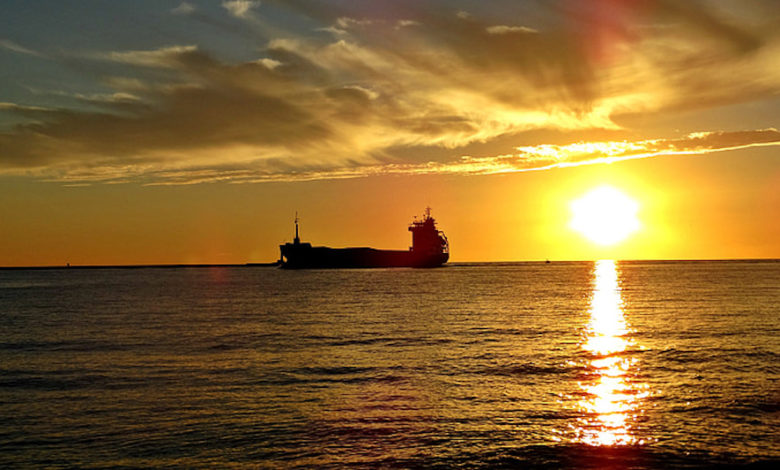Shipping’s decarbonisation needs to work for the many, not just the few

Matthieu de Tugny, president of Bureau Veritas Marine & Offshore, writes for Splash today on a theme we intend to revisit at next year’s Geneva Dry event.
If discussions at recent maritime events, from London to Athens, were anything to go by, the big debate has pivoted from how fast shipping needs to decarbonise, to how on earth will we achieve it within the time frames we need to work towards? As we move towards implementation, it is essential that we reconcile the need for fast-paced change with a fundamental reality: the bulk of our industry is made of relatively small fleets. The average shipowner owns 4.5 ships.
This is significant because it speaks volumes about the level of financial risk and technical capabilities for decarbonisation. Smaller fleets may mean fewer opportunities to trial new technologies, less data, smaller technical departments, and less financial scope to tolerate reduced earnings or additional downtime in the name of R&D. Therefore, while we applaud the leadership of first movers when they take meaningful action, we can’t expect smaller shipowners to respond in the same way as shipping’s global giants.
Global roadmaps and scenarios for shipping’s decarbonisation are important, but they will be of limited value unless they recognise and address the specific challenges that shipowners face – and these vary enormously depending on their fleet size, routes, and the segments in which they operate.
How do we square this circle? The first step is to treat the world as we find it, not as we wish it was. In this spirit, we can learn valuable insights from the recent research conducted by BCG and the Global Centre for Maritime Decarbonisation that categorises the vast majority of owners of smaller fleets as ‘conservatives’ or ‘followers’ rather than ‘frontrunners’ in their approach to decarbonisation. This is not necessarily because they have a different perspective on the urgency of climate action, but in many cases simply reflects that the options they have at their disposal are far more limited. But they will inevitably feel the heat of new regulation, particularly the outcomes of MEPC 80 as well as EU ETS and FuelEU.
So, where do we start? The good news is that shipowners can be both pragmatic and ambitious in their decarbonisation journey, whatever the size of their fleets. A practical starting point is a data-driven analysis of their operations, from which they can set clear KPIs, and then analyse which emission reduction solutions would work best for their needs, ensuring that any action taken is rooted in hard data.
Right now, we see ever more focus on finding efficiencies, energy saving and operational measures using digital tools to reduce fuel consumption and, consequently, emissions. The industry is developing the skills, the datasets and the data integration tools to deliver the analysis and insight for owners to make decisions with much more confidence.
Collaboration, information sharing and pooling of resources will be another part of the solution. The transition will look and feel differently for different companies, but it doesn’t mean that they should work in siloes. By joining associations, sharing knowledge, and keeping their eyes and ears open to what their peers are doing, owners can use the strength of the group to make better informed decisions.
There is a call to arms on at least three fronts.
We need a regulatory framework that offers longer term clarity to help owners to plan ahead and deliver on targets in a way that works for their businesses. IMO has set out a much higher level of ambition, but we need to see exactly how that ambition will crystallise in policy instruments.
In terms of innovation, we need efficiency solutions that deliver on a vessel-by-vessel basis in the short term; especially pre-2030. The great news here is that the latest wave of digital and voyage optimisation systems offer low-hanging fruit that can be deployed today.
Finally, from a class perspective, we need rules, notations and technical guidance that give all owners confidence in the safety and performance of their choices, and tailored expertise and advice that is specific to their business.
We can’t afford to ignore shipping’s diverse landscape, both in terms of segments and fleet sizes. A good credibility test for any decarbonisation strategy for global shipping is whether it works in practice for the owner of one, two or three ships.
A better starting point is to think not of a single, monolithic energy transition, but instead, multiple transitions taking place simultaneously, across different sectors, different vessel types, and for different scales of ownership. If we put ourselves in the shoes of owners and develop bespoke strategies for their needs, we can start making decarbonisation work for the many, not just the few.

And more than 3 years after I wrote this article there still isn’t consensus about what decarbonisation actually means: The case for clarifying zero emissions and decarbonisation https://splash247.com/the-case-for-clarifying-zero-emissions-and-decarbonisation/